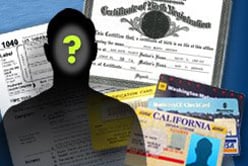CDC Changes its COVID-19 Testing Guidance
On September 17, 2020, the federal Centers for Disease Control (CDC) released the following updated versions of former guidance:
- Overview of Testing for SARS-CoV-2 (COVID-19) - Summary of considerations and current CDC recommendations regarding SARS-CoV-2 testing. The update in this guidance clarified that asymptomatic persons need to be tested for COVID-19, including close contacts of those with COVID-19, because of asymptomatic and pre-symptomatic transmission. Previously, the CDC stated that people without COVID-19 symptoms do not necessarily need to be tested.
- Guidance for Reopening Buildings After Prolonged Shutdown or Reduced Operation – The update in this guidance addressed mold awareness, monitoring, and remediation during and after prolonged building shutdowns and updated Legionella guidance for people with weakened immune systems and the use of respiratory protection when flushing water systems.
Form I-9 Compliance Flexibility Extended Again
On September 14, 2020, the U.S. Immigration and Customs Enforcement (ICE) announced an extension of the flexibilities in rules related to Form I-9 compliance that was granted earlier this year. Due to the continued COVID-19-related precautions, the Department of Homeland Security (DHS) will extend this policy until November 19, 2020.
On March 19, 2020, due to precautions implemented by employers and employees associated with COVID-19, DHS announced that it would defer the physical presence requirements associated with the Form I-9, Employment Eligibility Verification. This policy only applies to employers and workplaces that are operating remotely. If there are employees physically present at a work location, no exceptions are being implemented at this time for in-person verification of identity and employment eligibility documentation for Form I-9.
DOL Revisions to FFCRA Paid Sick Leave and Expanded Family and Medical Leave Regulations
On September 11, 2020, the U.S. Department of Labor’s Wage and Hour Division (WHD) posted revisions to regulations that implemented the paid sick leave and expanded family and medical leave provisions of the Families First Coronavirus Response Act (FFCRA). The revisions made by the new rule clarify workers’ rights and employers’ responsibilities under the FFCRA’s paid leave provisions, in light of the U.S. District Court for the Southern District of New York’s August 3, 2020 decision that found portions of the regulations invalid, and are effective September 16, 2020 when published in the Federal Register.
The revisions do the following:
- Explain the requirement that employees may take FFCRA leave only if work would otherwise be available to them.
- Explain the requirement that an employee must have employer approval to take FFCRA leave intermittently.
- Revise the definition of “health care provider” to include only employees who meet the definition of that term under the Family and Medical Leave Act regulations or who are employed to provide diagnostic services, preventative services, treatment services, or other services that are integrated with and necessary to the provision of patient care which, if not provided, would adversely impact patient care.
- Clarify that employees must provide required documentation supporting their need for FFCRA leave to their employers as soon as practicable.
- Correct an inconsistency regarding when employees may be required to provide notice of a need to take expanded family and medical leave to their employers.
The Department issued its initial temporary rule implementing provisions under the FFCRA on April 1, 2020.
EEOC Updated COVID-19, ADA, Rehabilitation Act, and Other EEO Laws Guidance
On September 8, 2020, the U.S. Equal Employment Opportunity Commission updated the following topics in its What You Should Know About COVID 19 and the ADA, the Rehabilitation Act, and Other EEO Laws guidance:
- Disability-Related Inquiries and Medical Exams
- Employer-administered COVID-19 tests.
- Employers asking all employees physically entering the workplace if they have been diagnosed with or tested for COVID-19.
- Employers asking COVID-19 questions specific to one employee and not all.
- Employers asking employees in the workplace about family members with COVID-19 diagnosis.
- Employees who refuse to temperature-taking or answering COVID-19 questions.
- Employers requesting information from employees about whether they are sick or why they were absent from work.
- Confidentiality of Medical Information
- Reporting when an employee has COVID-19 and ADA confidentiality requirements.
- Employee reporting another employee’s COVID-19 symptoms and ADA confidentiality.
- Teleworking employees with COVID-19, reporting, and keeping ADA information confidential.
- Reasonable Accommodation
- Employers inviting employee to currently ask for a future reasonable accommodation.
- Reasonable accommodation for teleworking employees during COVID-19.
- Automatic teleworking as a reasonable accommodation after reopening.
- Returning employee with a disability and a new accommodation request to telework when the prior request to telework was previously denied.
- Excusable delays during the interactive process and COVID-19.
- Federal agencies and delayed timelines due to COVID-19.
- Furloughs and Layoffs
- Additional EEO consideration in furloughs or layoffs.
- Age
- Employer offering flexibilities to other workers cannot treat older comparable workers less favorably based on age.
Disability-Related Inquiries and Medical Exams
A.6. May an employer administer a COVID-19 test (a test to detect the presence of the COVID-19 virus) when evaluating an employee’s initial or continued presence in the workplace? (4/23/20; updated 9/8/20 to address stakeholder questions about updates to CDC guidance)
The ADA requires that any mandatory medical test of employees be “job related and consistent with business necessity.” Applying this standard to the current circumstances of the COVID-19 pandemic, employers may take screening steps to determine if employees entering the workplace have COVID-19 because an individual with the virus will pose a direct threat to the health of others. Therefore an employer may choose to administer COVID-19 testing to employees before initially permitting them to enter the workplace and/or periodically to determine if their presence in the workplace poses a direct threat to others. The ADA does not interfere with employers following recommendations by the CDC or other public health authorities regarding whether, when, and for whom testing or other screening is appropriate. Testing administered by employers consistent with current CDC guidance will meet the ADA’s “business necessity” standard.
Consistent with the ADA standard, employers should ensure that the tests are considered accurate and reliable. For example, employers may review information from the U.S. Food and Drug Administration about what may or may not be considered safe and accurate testing, as well as guidance from CDC or other public health authorities. Because the CDC and FDA may revise their recommendations based on new information, it may be helpful to check these agency websites for updates. Employers may wish to consider the incidence of false-positives or false-negatives associated with a particular test. Note that a positive test result reveals that an individual most likely has a current infection and may be able to transmit the virus to others. A negative test result means that the individual did not have detectable COVID-19 at the time of testing.
A negative test does not mean the employee will not acquire the virus later. Based on guidance from medical and public health authorities, employers should still require–to the greatest extent possible–that employees observe infection control practices (such as social distancing, regular handwashing, and other measures) in the workplace to prevent transmission of COVID-19.
Note: Questions A.6 and A.8 address screening of employees generally. See Question A.9 regarding decisions to screen individual employees.
A.8. May employers ask all employees physically entering the workplace if they have been diagnosed with or tested for COVID-19? (9/8/20; adapted from 3/27/20 Webinar Question 1)
Yes. Employers may ask all employees who will be physically entering the workplace if they have COVID-19 or symptoms associated with COVID-19, and if they have been tested for COVID-19. Symptoms associated with COVID-19 include, for example, fever, chills, cough, and shortness of breath. The CDC has identified a current list of symptoms.
An employer may exclude those with COVID-19, or symptoms associated with COVID-19, from the workplace because, as EEOC has stated, their presence would pose a direct threat to the health or safety of others. However, for those employees who are teleworking and are not physically interacting with coworkers or others (for example, customers), the employer would generally not be permitted to ask these questions.
A.9. May a manager ask only one employee—as opposed to asking all employees—questions designed to determine if she has COVID-19, or require that this employee alone have her temperature taken or undergo other screening or testing? (9/8/20; adapted from 3/27/20 Webinar Question 3)
If an employer wishes to ask only a particular employee to answer such questions, or to have her temperature taken or undergo other screening or testing, the ADA requires the employer to have a reasonable belief based on objective evidence that this person might have the disease. So, it is important for the employer to consider why it wishes to take these actions regarding this particular employee, such as a display of COVID-19 symptoms. In addition, the ADA does not interfere with employers following recommendations by the CDC or other public health authorities regarding whether, when, and for whom testing or other screening is appropriate.
A.10. May an employer ask an employee who is physically coming into the workplace whether they have family members who have COVID-19 or symptoms associated with COVID-19? (9/8/20; adapted from 3/27/20 Webinar Question 4)
No. The Genetic Information Nondiscrimination Act (GINA) prohibits employers from asking employees medical questions about family members. GINA, however, does not prohibit an employer from asking employees whether they have had contact with anyone diagnosed with COVID-19 or who may have symptoms associated with the disease. Moreover, from a public health perspective, only asking an employee about his contact with family members would unnecessarily limit the information obtained about an employee’s potential exposure to COVID-19.
A.11. What may an employer do under the ADA if an employee refuses to permit the employer to take his temperature or refuses to answer questions about whether he has COVID-19, has symptoms associated with COVID-19, or has been tested for COVID-19? (9/8/20; adapted from 3/27/20 Webinar Question 2)
Under the circumstances existing currently, the ADA allows an employer to bar an employee from physical presence in the workplace if he refuses to have his temperature taken or refuses to answer questions about whether he has COVID-19, has symptoms associated with COVID-19, or has been tested for COVID-19. To gain the cooperation of employees, however, employers may wish to ask the reasons for the employee’s refusal. The employer may be able to provide information or reassurance that they are taking these steps to ensure the safety of everyone in the workplace, and that these steps are consistent with health screening recommendations from CDC. Sometimes, employees are reluctant to provide medical information because they fear an employer may widely spread such personal medical information throughout the workplace. The ADA prohibits such broad disclosures. Alternatively, if an employee requests reasonable accommodation with respect to screening, the usual accommodation process should be followed; this is discussed in Question G.7.
A.12. During the COVID-19 pandemic, may an employer request information from employees who work on-site, whether regularly or occasionally, who report feeling ill or who call in sick? (9/8/20; adapted from Pandemic Preparedness Question 6)
Due to the COVID-19 pandemic, at this time employers may ask employees who work on-site, whether regularly or occasionally, and report feeling ill or who call in sick, questions about their symptoms as part of workplace screening for COVID-19.
A.13. May an employer ask an employee why he or she has been absent from work? (9/8/20; adapted from Pandemic Preparedness Question 15)
Yes. Asking why an individual did not report to work is not a disability-related inquiry. An employer is always entitled to know why an employee has not reported for work.
A.14. When an employee returns from travel during a pandemic, must an employer wait until the employee develops COVID-19 symptoms to ask questions about where the person has traveled? (9/8/20; adapted from Pandemic Preparedness Question 8)
No. Questions about where a person traveled would not be disability-related inquiries. If the CDC or state or local public health officials recommend that people who visit specified locations remain at home for a certain period of time, an employer may ask whether employees are returning from these locations, even if the travel was personal.
Confidentiality of Medical Information
B.5. Suppose a manager learns that an employee has COVID-19, or has symptoms associated with the disease. The manager knows she must report it but is worried about violating ADA confidentiality. What should she do? (9/8/20; adapted from 3/27/20 Webinar Question 5)
The ADA requires that an employer keep all medical information about employees confidential, even if that information is not about a disability. Clearly, the information that an employee has symptoms of, or a diagnosis of, COVID-19, is medical information. But the fact that this is medical information does not prevent the manager from reporting to appropriate employer officials so that they can take actions consistent with guidance from the CDC and other public health authorities.
The question is really what information to report: is it the fact that an employee—unnamed—has symptoms of COVID-19 or a diagnosis, or is it the identity of that employee? Who in the organization needs to know the identity of the employee will depend on each workplace and why a specific official needs this information. Employers should make every effort to limit the number of people who get to know the name of the employee.
The ADA does not interfere with a designated representative of the employer interviewing the employee to get a list of people with whom the employee possibly had contact through the workplace, so that the employer can then take action to notify those who may have come into contact with the employee, without revealing the employee’s identity. For example, using a generic descriptor, such as telling employees that “someone at this location” or “someone on the fourth floor” has COVID-19, provides notice and does not violate the ADA’s prohibition of disclosure of confidential medical information. For small employers, coworkers might be able to figure out who the employee is, but employers in that situation are still prohibited from confirming or revealing the employee’s identity. Also, all employer officials who are designated as needing to know the identity of an employee should be specifically instructed that they must maintain the confidentiality of this information. Employers may want to plan in advance what supervisors and managers should do if this situation arises and determine who will be responsible for receiving information and taking next steps.
B.6. An employee who must report to the workplace knows that a coworker who reports to the same workplace has symptoms associated with COVID-19. Does ADA confidentiality prevent the first employee from disclosing the coworker's symptoms to a supervisor? (9/8/20; adapted from 3/27/20 Webinar Question 6)
No. ADA confidentiality does not prevent this employee from communicating to his supervisor about a coworker’s symptoms. In other words, it is not an ADA confidentiality violation for this employee to inform his supervisor about a coworker’s symptoms. After learning about this situation, the supervisor should contact appropriate management officials to report this information and discuss next steps.
B.7. An employer knows that an employee is teleworking because the person has COVID-19 or symptoms associated with the disease, and that he is in self-quarantine. May the employer tell staff that this particular employee is teleworking without saying why? (9/8/20; adapted from 3/27/20 Webinar Question 7)
Yes. If staff need to know how to contact the employee, and that the employee is working even if not present in the workplace, then disclosure that the employee is teleworking without saying why is permissible. Also, if the employee was on leave rather than teleworking because he has COVID-19 or symptoms associated with the disease, or any other medical condition, then an employer cannot disclose the reason for the leave, just the fact that the individual is on leave.
B.8. Many employees, including managers and supervisors, are now teleworking as a result of COVID-19. How are they supposed to keep medical information of employees confidential while working remotely? (9/8/20; adapted from 3/27/20 Webinar Question 9)
The ADA requirement that medical information be kept confidential includes a requirement that it be stored separately from regular personnel files. If a manager or supervisor receives medical information involving COVID-19, or any other medical information, while teleworking, and is able to follow an employer’s existing confidentiality protocols while working remotely, the supervisor has to do so. But to the extent that is not feasible, the supervisor still must safeguard this information to the greatest extent possible until the supervisor can properly store it. This means that paper notepads, laptops, or other devices should not be left where others can access the protected information.
Similarly, documentation must not be stored electronically where others would have access. A manager may even wish to use initials or another code to further ensure confidentiality of the name of an employee.
Reasonable Accommodation
D.8. May an employer invite employees now to ask for reasonable accommodations they may need in the future when they are permitted to return to the workplace? (4/17/20; updated 9/8/20 to address stakeholder questions)
Yes. Employers may inform the workforce that employees with disabilities may request accommodations in advance that they believe they may need when the workplace re-opens. This is discussed in greater detail in Question G.6. If advance requests are received, employers may begin the "interactive process" – the discussion between the employer and employee focused on whether the impairment is a disability and the reasons that an accommodation is needed. If an employee chooses not to request accommodation in advance, and instead requests it at a later time, the employer must still consider the request at that time.
D.14. When an employer requires some or all of its employees to telework because of COVID-19 or government officials require employers to shut down their facilities and have workers telework, is the employer required to provide a teleworking employee with the same reasonable accommodations for disability under the ADA or the Rehabilitation Act that it provides to this individual in the workplace? (9/8/20; adapted from 3/27/20 Webinar Question 20)
If such a request is made, the employer and employee should discuss what the employee needs and why, and whether the same or a different accommodation could suffice in the home setting. For example, an employee may already have certain things in their home to enable them to do their job so that they do not need to have all of the accommodations that are provided in the workplace.
Also, the undue hardship considerations might be different when evaluating a request for accommodation when teleworking rather than working in the workplace. A reasonable accommodation that is feasible and does not pose an undue hardship in the workplace might pose one when considering circumstances, such as the place where it is needed and the reason for telework. For example, the fact that the period of telework may be of a temporary or unknown duration may render certain accommodations either not feasible or an undue hardship. There may also be constraints on the normal availability of items or on the ability of an employer to conduct a necessary assessment.
As a practical matter, and in light of the circumstances that led to the need for telework, employers and employees should both be creative and flexible about what can be done when an employee needs a reasonable accommodation for telework at home. If possible, providing interim accommodations might be appropriate while an employer discusses a request with the employee or is waiting for additional information.
D.15. Assume that an employer grants telework to employees for the purpose of slowing or stopping the spread of COVID-19. When an employer reopens the workplace and recalls employees to the worksite, does the employer automatically have to grant telework as a reasonable accommodation to every employee with a disability who requests to continue this arrangement as an ADA/Rehabilitation Act accommodation? (9/8/20; adapted from 3/27/20 Webinar Question 21)
No. Any time an employee requests a reasonable accommodation, the employer is entitled to understand the disability-related limitation that necessitates an accommodation. If there is no disability-related limitation that requires teleworking, then the employer does not have to provide telework as an accommodation. Or, if there is a disability-related limitation but the employer can effectively address the need with another form of reasonable accommodation at the workplace, then the employer can choose that alternative to telework.
To the extent that an employer is permitting telework to employees because of COVID-19 and is choosing to excuse an employee from performing one or more essential functions, then a request—after the workplace reopens—to continue telework as a reasonable accommodation does not have to be granted if it requires continuing to excuse the employee from performing an essential function. The ADA never requires an employer to eliminate an essential function as an accommodation for an individual with a disability.
The fact that an employer temporarily excused performance of one or more essential functions when it closed the workplace and enabled employees to telework for the purpose of protecting their safety from COVID-19, or otherwise chose to permit telework, does not mean that the employer permanently changed a job’s essential functions, that telework is always a feasible accommodation, or that it does not pose an undue hardship. These are fact-specific determinations. The employer has no obligation under the ADA to refrain from restoring all of an employee’s essential duties at such time as it chooses to restore the prior work arrangement, and then evaluating any requests for continued or new accommodations under the usual ADA rules.
D.16. Assume that prior to the emergence of the COVID-19 pandemic, an employee with a disability had requested telework as a reasonable accommodation. The employee had shown a disability-related need for this accommodation, but the employer denied it because of concerns that the employee would not be able to perform the essential functions remotely. In the past, the employee therefore continued to come to the workplace. However, after the COVID-19 crisis has subsided and temporary telework ends, the employee renews her request for telework as a reasonable accommodation. Can the employer again refuse the request? (9/8/20; adapted from 3/27/20 Webinar Question 22)
Assuming all the requirements for such a reasonable accommodation are satisfied, the temporary telework experience could be relevant to considering the renewed request. In this situation, for example, the period of providing telework because of the COVID-19 pandemic could serve as a trial period that showed whether or not this employee with a disability could satisfactorily perform all essential functions while working remotely, and the employer should consider any new requests in light of this information. As with all accommodation requests, the employee and the employer should engage in a flexible, cooperative interactive process going forward if this issue does arise.
D.17. Might the pandemic result in excusable delays during the interactive process? (9/8/20; adapted from 3/27/20 Webinar Question 19)
Yes. The rapid spread of COVID-19 has disrupted normal work routines and may have resulted in unexpected or increased requests for reasonable accommodation. Although employers and employees should address these requests as soon as possible, the extraordinary circumstances of the COVID-19 pandemic may result in delay in discussing requests and in providing accommodation where warranted. Employers and employees are encouraged to use interim solutions to enable employees to keep working as much as possible.
D.18. Federal agencies are required to have timelines in their written reasonable accommodation procedures governing how quickly they will process requests and provide reasonable accommodations. What happens if circumstances created by the pandemic prevent an agency from meeting this timeline? (9/8/20; adapted from 3/27/20 Webinar Question 19)
Situations created by the current COVID-19 crisis may constitute an “extenuating circumstance”—something beyond a Federal agency’s control—that may justify exceeding the normal timeline that an agency has adopted in its internal reasonable accommodation procedures.
Furloughs and Layoffs
F.2. What are additional EEO considerations in planning furloughs or layoffs? (9/8/20; adapted from 3/27/20 Webinar Question 13)
The laws enforced by the EEOC prohibit covered employers from selecting people for furlough or layoff because of that individual’s race, color, religion, national origin, sex, age, disability, protected genetic information, or in retaliation for protected EEO activity.
Age
H.2. If an employer is choosing to offer flexibilities to other workers, may older comparable workers be treated less favorably based on age? (9/8/20; adapted from 3/27/20 Webinar Question 12)
No. If an employer is allowing other comparable workers to telework, it should make sure it is not treating older workers less favorably based on their age.
Deferring Federal Payroll Tax Obligations and COVID-19
On August 28, 2020, the U.S. Department of the Treasury issued guidance to address President Trump’s August 8 memo authorizing the deferral of the withholding, deposit, and payment of Social Security payroll tax obligations for affected taxpayers. Employers are not required to defer the payment of Social Security taxes (the deferral is optional), but any deferred taxes must be repaid. The guidance and the memo do not address whether employees can elect to defer (or decline the deferral of) this federal payroll tax.
Affected taxpayers are defined as employers that:
- Are required to withhold and pay their employees’ share of federal payroll taxes (OASDI/Social Security taxes and Medicare, collectively FICA); and
- Are affected by the COVID-19 emergency.
The tax deferral is applicable to:
- Wages paid September 1, 2020 through December 31, 2020; and
- Only for employees who earn less than $4,000 during any biweekly pay period, before taxes, or the equivalent amount for other pay periods.
The $4,000 threshold determination is made on a pay period by pay period basis. For instance, if an employee’s pay for one pay period is less than $4,000, that amount is considered applicable wages for that pay period, and the deferral applies to the wages paid to that employee for that pay period, regardless of their wages from other pay periods.
This deferral is without penalty interest, additional amounts, or addition to the tax; however, payment of these taxes is delayed — not forgiven — and the deferred taxes must be paid the following year. Congressional action may change this repayment requirement, but for now, employers must withhold and pay the total applicable taxes that were previously deferred in 2020 — along with those that will be due for 2021 — on the wages they pay between January 1, 2021 and April 30, 2021.
Failure to make these tax payments in 2021 will result in interest and penalties, and additions to tax will begin to accrue on May 1, 2021 on any unpaid amounts. If necessary, employers may plan to otherwise collect the total applicable taxes from the employee.
Note: The U.S. Department of Defense (DoD) is automatically deferring the withholding, effective September 2020, and civilian employees' 6.2 percent OASDI tax withholding will be temporarily deferred if their wages, subject to OASDI, are less than $4,000 in any given pay period. The DoD provides a fact sheet and in depth FAQs addressing the program and deferral. For instance, an FAQ addresses that employees who separate or retire in 2020,before the Social Security tax can be collected in 2021, are still responsible for the Social Security tax repayment.
COVID-19 and Lost Wages Assistance Program
On August 12, 2020, the U.S. Department of Labor (DOL) released guidance for the Lost Wages Assistance (LWA) program that is administered by states through a grant agreement with the Federal Emergency Management Agency (FEMA). FEMA does not pay benefits directly to individuals; instead, the states distribute the funds through their unemployment insurance (UI) system as a supplemental payment.
The LWA provides eligible claimants up to $400 per week of additional benefits beginning with weeks of unemployment ending on or after August 1, 2020, through weeks of unemployment ending no later than December 27, 2020. An eligible claimant is an individual:
- Who provides self-certification that they are unemployed or partially unemployed due to COVID-19 disruptions; and
- Who the state confirmed as receiving at least $100 of underlying unemployment benefits through regular unemployment compensation or through any of the following:
- Unemployment Compensation for Federal Employees (UCFE);
- Unemployment Compensation for Ex-Servicemembers (UCX);
- Pandemic Emergency Unemployment Compensation (PEUC);
- Pandemic Unemployment Assistance (PUA);
- Extended Benefits (EB);
- Short-Time Compensation (STC);
- Trade Readjustment Allowances (TRA); and
- Payments under the Self-Employment Assistance (SEA) program.
Upon a grant award by FEMA, states may provide eligible claimants $400 per week, with a $300 federal contribution. LWA is funded using a 75 percent federal cost share and 25 percent state match. If states provide the maximum benefit to their claimants, they may pay an additional $100 per claimant per week using amounts allocated to them out of the Coronavirus Relief Fund (CRF) or other state funding to cover the 25 percent state match. States may meet the $100 per claimant per week state match with the payments they make for regular state UI benefits to claimants that also meet the requirement to be unemployed or partially unemployed as a result of COVID-19 if they choose to do so. This includes states in borrowing status under the Social Security Act. In this case, eligible claimants will only receive an LWA payment of $300 in addition to their weekly benefit amount.
If a state chooses to use another state funding source (CRF or general revenue) besides those currently supporting the state UI program to cover the 25 percent state match, eligible claimants will receive a total LWA payment of $400 in addition to their weekly benefit amount ($300 from the federal cost share and $100 from the state match).
LWA is not payable to those collecting Disaster Unemployment Assistance (DUA) or receiving extended state benefits. The LWA program may terminate before December 27, 2020, if:
- FEMA expends the $44 billion from the Disaster Relief Fund (DRF) account designated for the LWA program;
- The total balance of the DRF account decreases to $25 billion; or
- Legislation is enacted that provides supplemental federal unemployment compensation or similar compensation for unemployed or underemployed individuals due to the COVID-19 outbreak.

















